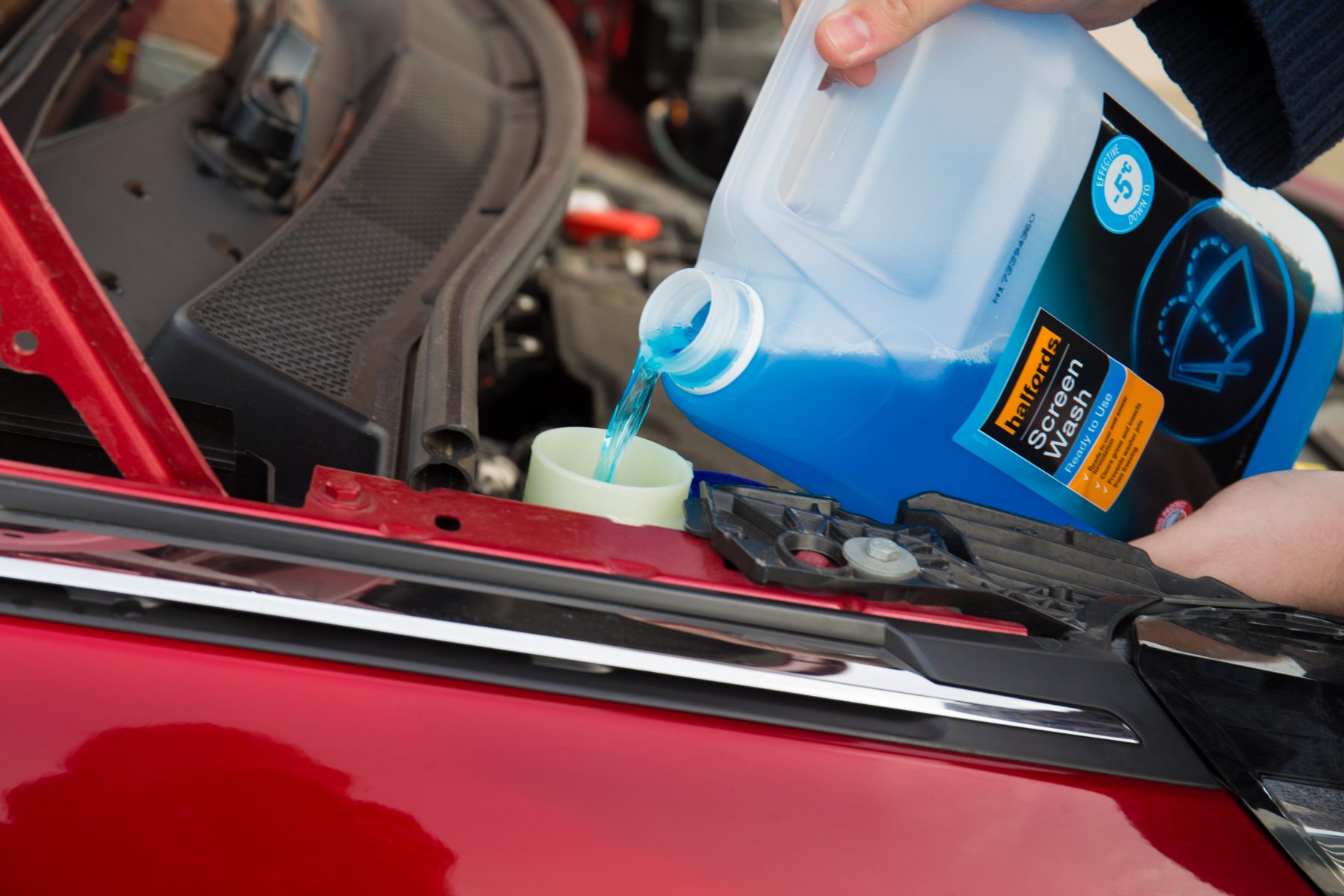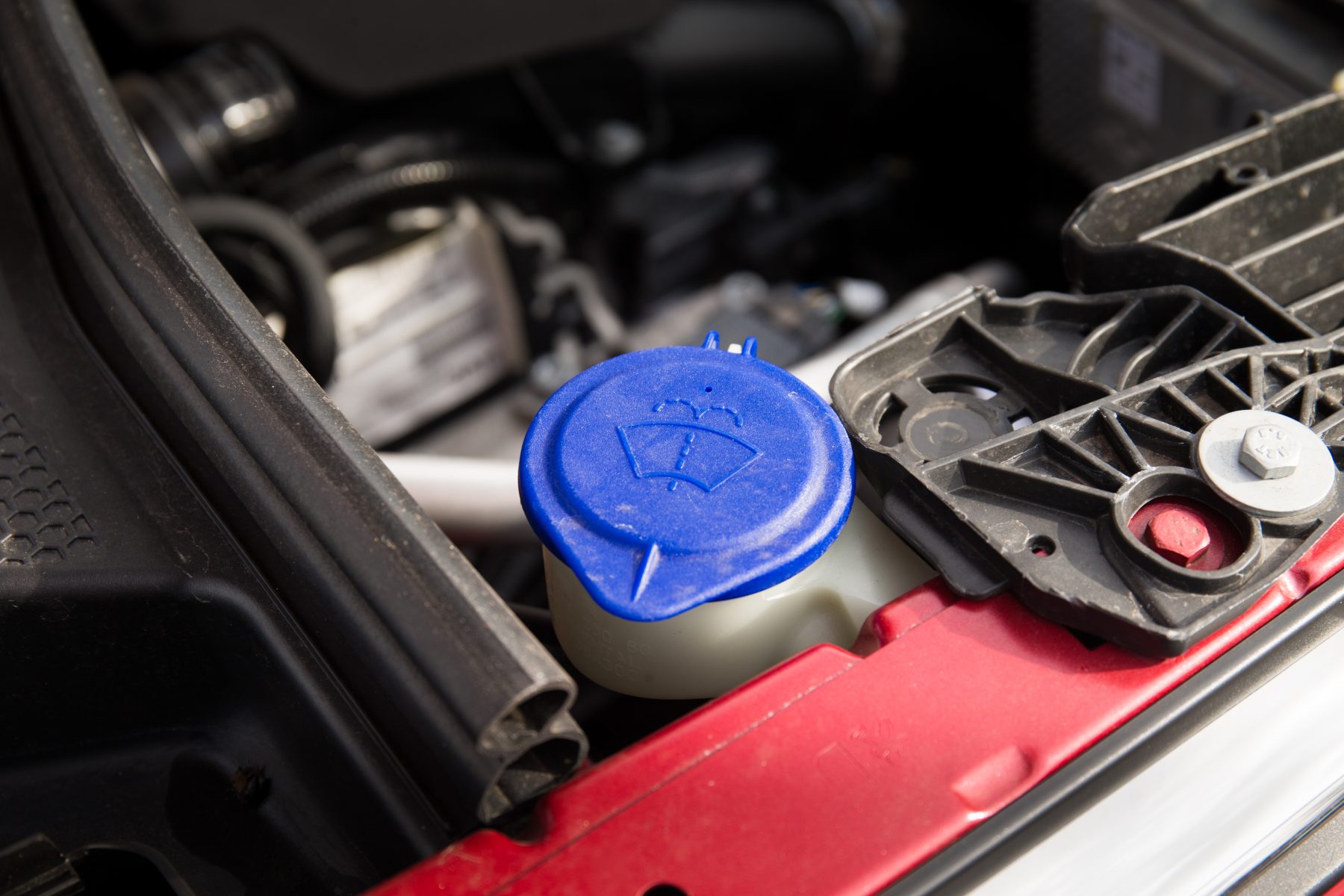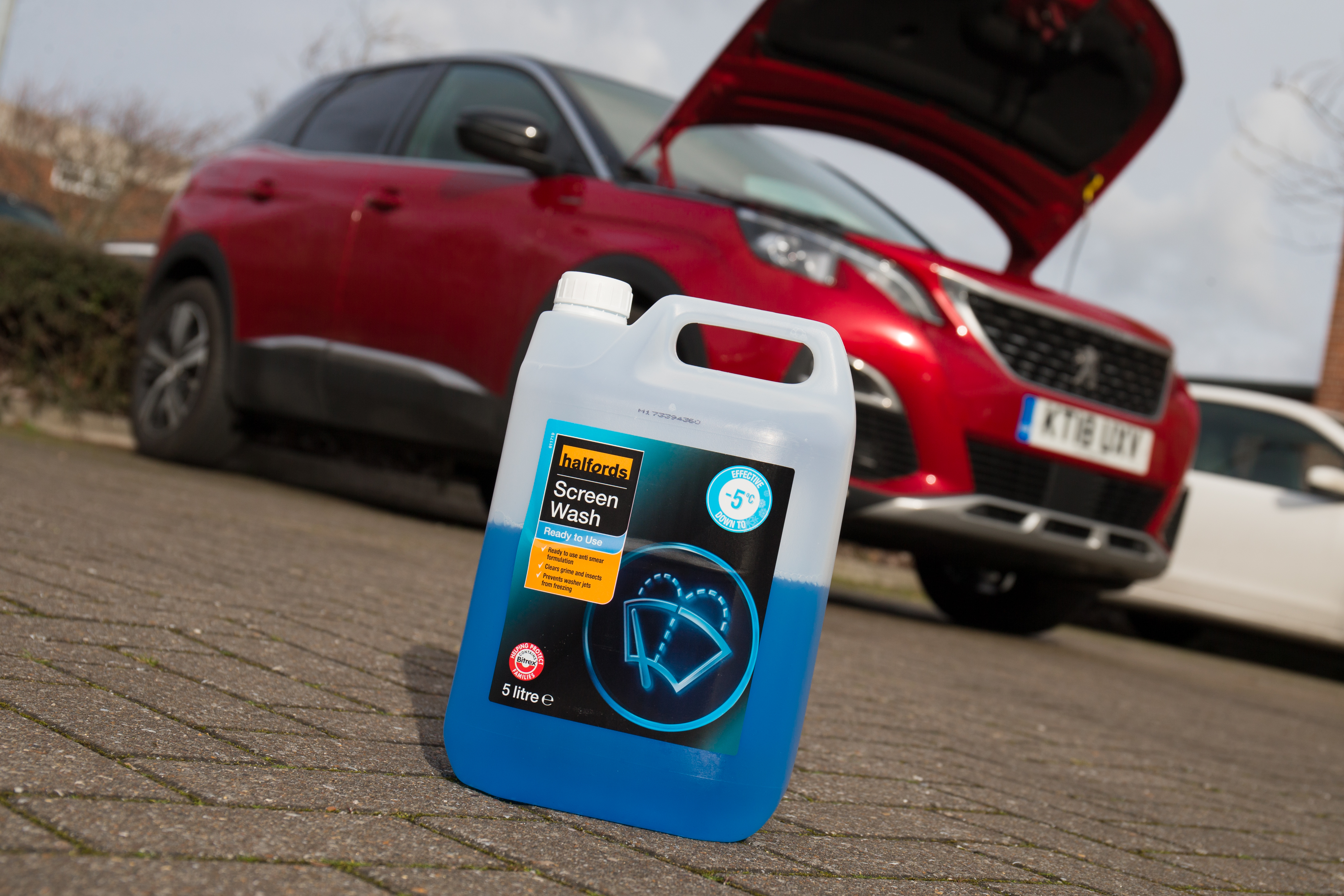Windscreen washer fluid is far from exciting, but it’s one of the most crucial components in running a safe car at this time of year.
Without it, visibility in a car would be seriously compromised once dirt and road debris begins to build up on the move — particularly once the gritters come out — and you can even be handed a fine for driving without it.
It may seem simple, but there’s a lot to know about washer fluid. Here’s our guide to why you need it and how to refill it.
What does windscreen washer fluid do?
As the name suggests, windscreen washer fluid exists to keep your windscreen clean. It sits in a small container located in the engine bay and is sprayed onto the car through jets which are usually mounted on the bonnet or built into wiper arms.
It’s most commonly activated by pushing a stalk behind the steering wheel. Some cars with rear wipers also have nozzles to spray the rear window.
What options are available?
There are two main types of washer fluid available — concentrated or ready-mixed. The former tends to be purely washer solution and is designed to be mixed with water by the user before putting it into the car.
This brings with it the advantage of the fluid in bottle lasting longer and also the ability to vary percentage of solution to water. It’s recommended that you use a strong mix of solution, if not solely washer fluid, over the winter months. This is because water can freeze in the pipes when temperatures drop below zero.
Ready-mixed is pretty self-explanatory — eliminating the need to add water yourself. This makes it handy for a quick on-the-go top up of fluid, but you’re likely to go through the bottle quicker this way.
Some solutions are also designed to work at temperatures well below zero, but as it gets lower the cost tends to increase. In the UK, fluid that can operate to -10c is all most motorists will ever need.

Can I use water?
Using water in place of washer fluid is entirely possible but it’s not recommended. Water doesn’t clear dirt as effectively as dedicated solutions and is more susceptible to freezing in the colder months.
Will my car fail an MOT test without washer fluid?
While your car won’t be failed on an MOT test for having a low volume of washer fluid, it could be at risk of failing as a result of poor windscreen clearance.
If fluid is low, the washer jets may be deemed to not be working properly and that could result in the vehicle failing its MOT. It’s worth topping up the fluid ahead of an MOT to avoid a simple but costly error.
Can I be fined for driving without it?
Although the probability of being pulled over by a police officer to check if your windscreen washer level is low, being found without it while your car is being checked for anything else could land you with a fine.
According to Section 34 (6) of the Road Vehicles (Construction and Use) Regulations 1986, “every wiper and washer fitted in accordance with this regulation shall at all times while a vehicle is being used on a road be maintained in efficient working order and be properly adjusted.”
How to change windscreen washer fluid
Open the bonnet
Changing washer fluid is a very simple task. First, hop into your car and locate the latch for opening the bonnet. If you’re not sure where to look then consult your owner’s manual. However, it’s often placed below the steering wheel or near the passenger-side glovebox.
Locate the washer bottle
The washer bottle, which holds the windscreen fluid, is often marked out with a light blue cap with an embossed image of water spraying. Most will simply lift open or use a screw cap.

Pour it in
This part is simple, simply place the opening of the bottle above the opened cap and begin to pour the solution in until full —most cars will have a fill-to line on the neck of the bottle. If you’re concerned about spillage, consider using a funnel.
Test the jets
It’s worth checking everything is in working order now, before setting off again. Activate the jets how you would normally via the washer stalk. If the fluid is spraying onto the windscreen and clearing dirt, then all is good. If not, there could be a problem in the bottle itself or with the spray nozzles.

